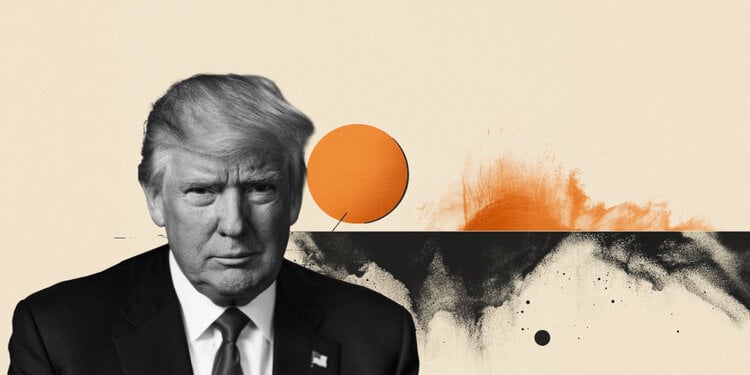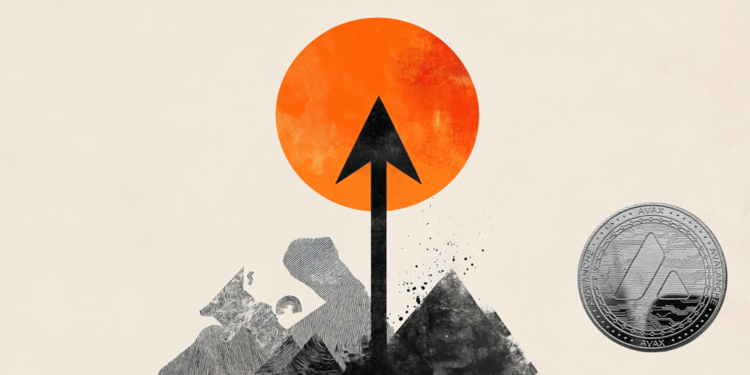The effect of the collapse of the Terraform Labs project led to a massive investor panic and a fall in the cryptocurrency market, which is comparable to the consequences of the bankruptcy of Lehman Brothers in the banking sector.
The crypto community is in disarray after two promising Terraform Labs (TFL) Do Kwon projects collapsed simultaneously. And while we know in general terms what fueled the “death fall” spiral, many questions, grievances, speculation and conspiracy theories remain as to exactly what happened.
Let us turn to a brief chronology of events. On May 4, 2022, the analytical agency CoinShares published a weekly report in which it reported on the continued fall of the cryptocurrency market and the outflow of institutional capital from cryptocurrency funds, as a result of which about $339 million was withdrawn in four weeks. CoinShares experts noted that investors in companies specializing in blockchain succumbed to negative moods.
On May 5, when the cryptocurrency world was still sleeping peacefully, and the directorate of Terraform Labs, as it will become obvious later, was preparing for upcoming events, the reserve fund of the Luna Foundation Guard (LFG) project acquired BTC for $1.5 billion. UST stablecoins were used for this. Earlier, CEO of Terraform Labs (TFL) Do Kwon repeatedly mentioned that Terra plans to increase the volume of BTC to $10 billion, which will ensure the stability of the UST rate.
In the same period, macro strategist Lyn Alden expressed concern that against the backdrop of a falling market, the active accumulation of LFG bitcoins could provoke investors to convert UST or LUNA stablecoins into fiat currency for its withdrawal. Alden also noted a high degree of likelihood of a sharp decline in LUNA, which could force LFG to use BTC reserves to maintain the stability of the UST stablecoin.
Based on her assumptions, Alden came to the conclusion that the 19.5% return on the Anchor Protocol (ANC) savings project claimed by TFL is unattainable. Especially in conditions when the main driver of demand for UST is artificially high yield, Anchor will disappear, which will lead to a massive withdrawal of investors’ funds in an unstable market.
On May 10, the cryptocurrency community was confronted with the fact that the third largest stablecoin by capitalization, TerraUSD (UST), lost its peg to the US dollar – at the moment, the UST rate fell to $0.61. As Alden predicted, the LFG fund sold a significant amount of collateral in the BTC in an attempt to support the UST rate, but this only brought down the LUNA rate by 64%. The co-founder of the Terra project, Do Kwon, addressed on Twitter to customers with a request not to panic and assert that the situation will soon stabilize.
On May 11, the Terra project collapsed. The rate of the previously popular stablecoin UST fell to $0.34, and the rate of the LUNA coin, which acted as collateral for UST, fell from $115 to $5. May 13 at Seongdong Police Station in Seoul received a statement that the day before, an unknown person illegally entered the territory of Do Kwon’s household and demanded an immediate meeting with him. His wife told the police that the location of their private residence was kept secret and asked the police to provide bodyguards.
On May 14, Do Kwon addressed the cryptocurrency community on Twitter, stating that the UST and LUNA collapse “broke his heart.” The co-founder of Terraform Labs claimed that neither he nor the companies associated with him profited from this incident.
“Dropout or serial scammer?”
The future co-founder of Terraform Labs, Do Kwon, was born on September 6, 1991 in Seoul. While studying at Stanford University, he worked for three months as an engineer at Apple, and then for the same amount of time at Microsoft.
In 2016, Kwon founded his own telecommunications company Anafi, where he was its director until 2017. In January 2018, Kwon, in partnership with Daniel Shin, co-founded Terraform Labs and assumed the position of CEO of the company. According to former Terra employees, Do Kwon was also the founder of another failed algorithmic stablecoin project, Basis Cash (BAC).
The launch of Basis Cash on the Ethereum blockchain took place at the end of 2020, shortly before the launch of UST. To create the Basis Cash project, an anonymous development team was formed, where the main backbone was Terraform Labs employees. The team modeled Basis Cash on the earlier but also unsuccessful Basis project known as Basecoin. Its founder Nader Al-Naji became the focus of the US Securities and Exchange Commission (SEC) after raising $140 million from investors. The SEC filed charges of violating the securities law, the Basis project was closedand Al-Naji was forced to return the money to investors.
The Basis Cash project is one of the first algorithmic stablecoins tested in real conditions, but also, like Terra, did not retain dollar support. For Do Kwon, it was the first attempt to circumvent the requirements of regulatory bodies, in particular, the SEC.
“Lehman Brothers of Crypto”
Panic on the part of investors, caused by the fact that the collapse of the Terraform Lab project occurs according to the most negative scenario, gave rise to some experts name this situation “Lehman Brothers of crypto”. Thus, they drew an analogy between the current situation with TFL and the crisis in the banking sector caused by the bankruptcy of the largest financial institution. Thus, the cost of the algorithmic stablecoin UST fell almost 100 times, it lost its peg to the US dollar, and the market capitalization of UST decreased by $16.6 billion. This led to investor panic and delisting of the asset on a number of cryptocurrency exchanges.
“I admit that in the whole situation there may be elements of the human factor, but if you abstract away, then basically the same thing happens as with Bear Stearns or Lehman Brothers. They allowed the Lehman situation for cryptocurrency. And now, as the situation develops without the participation of the US Federal Reserve, we will see how the rest of the system holds out in the near future,” Mark Carnegie, the founder of the cryptocurrency fund MHC Digital Asset Fund, shared his opinion.
Mistakes in calculations or the “giant Ponzi scheme”
There are two types of stablecoins – algorithmic stablecoins and stablecoins backed by an underlying asset such as gold or the US dollar. UST refers to algorithmic stablekins. Initially, the UST stablecoin is not backed by US dollars and depends on the value of BTC and LUNA, which it uses as its reserves.
The model assumed the use of a system with two crypto assets, in which one should remain stable (UST) and the other (LUNA) is designed to absorb volatility. At the same time, as an incentive for investment interest, it was proposed to deposit UST in the Anchor Protocol savings project, where investors were guaranteed an income of at least 19%, which was paid from Terra reserves. It was this fact that raised the concerns of critics who saw the UST model as either project manager’s high expectations or a pre-planned “giant Ponzi scheme”.
“Evil intent”
How did it become known According to The Straits Times, although TerraForm Labs was officially registered in Singapore, it has not applied for a license under the Payment Services Act. Also, TFL was not a Notified Person, which means that it was not granted an exemption from the compulsory licensing of activity in the Monetary Authority of Singapore (MAS). This may confirm the version that, like Basis, the TerraForm Labs project could only exist before the first serious complaints from the regulatory authorities. But, unlike Basis, no one was going to return funds to investors.
An additional reason for suspicion is the fact that by the decision of the general meeting of shareholders held on April 30, 2022, the Korean division of Terraform Labs was liquidated. The liquidation decision went into effect on May 4, just a few days before the collapse of UST and Luna. According to the corporate register entry, CEO Do Kwon is listed as the liquidator.
“Attack of the followers of Soros”
Crypto detective and blockchain expert nicknamed Onchain Wizard published tweeted his own theory suggesting that TerraForm Labs’ problems could actually be the result of a covert attack by Project Terra. Roughly in the style of George Soros, who in 1992 bet against the British pound, then led a group of traders and collapsed the UK currency system, cashing in on British taxpayers.
Viewpoint of the Onchain Wizard supports crypto enthusiast @napgener, who accused American hedge fund Citadel and investment company BlackRock of borrowing 100,000 BTC from the Gemini cryptocurrency exchange, exchanging them for UST, and then dumping all UST at once, which dropped the market.
A possible attack by BlackRock and Citadel against Terra could look like this. In anticipation of the attack, BlackRock and Citadel converted 25,000 BTC from debt into UST. Then they got Kwon’s consent to buy another large block in BTC at a discount for UST. The transfer of a significant amount of UST immediately reduced the liquidity of the stablecoin.
Then the organizers of the attack dumped the rest of the BTC and all of the UST, which caused a massive slippage and forced closure of the positions of both assets. The resulting panic among investors, the massive sale of assets, in particular LUNA, as well as forced withdrawals from the Anchor Protocol (ANC), led to the destruction of the market and the loss of UST’s peg to the US dollar. As a result, BlackRock and Citadel were able to buy BTC cheaply, repay the loan and earn on the difference.
Cryptocurrency giants Gemini, BlackRock and Citadel have denied rumors that they were involved in trading operations that provoked the weakening of the UST stablecoin’s peg to the US dollar.
Possible consequences
AirTree Ventures partner John Henderson believes that the collapse of UST was a setback for DeFi, but not an existential crisis for the entire crypto sector. In his opinion, “in the future, many will fail, and people will lose money again, as this is a story of innovation, experimentation and markets.” UST was one of the latest stablecoin pilot projects early on, and while its collapse is widely felt, it was a predictable occurrence in an emerging market, Henderson said.
HEX founder Richard Heart believes that the problem with Terra is centralized decision making. Do Kwon, says Hart, only bought Bitcoin successfully and does not understand what market cycles are. Hart and Henderson’s point of view is shared by King River Capital co-founder Chris Barter. According to the expert, the cryptocurrency market follows the patterns observed in traditional investment areas.
“The cycles of the crypto market regularly show pullbacks from 50% to 85%. That is the nature of this asset class and we have seen numerous questionable projects come to naught in the past,” he said.
The effect of Terra’s fall has spread to other stablecoins in recent days, including Tether, the largest stablecoin with a market capitalization of around $81 billion. TRX USDD has also come under suspicion.
Who’s next in line?
Investors have long wondered what reserves Tether has to support its peg to the US dollar. As a result, amid fears of a collapse of Tether due to the fall of LUNA and UST, the USDT stablecoin is trading at level $0.99.
The developers of the stablecoin Tether assured traders of the reliability of USDT and warned of speculators trying to capitalize on the manipulation of opinions. Tether representatives announced that they are going to move more than $1 billion of stablecoins from the Tron blockchain to Ethereum, as well as $20 million to Avalanche.
Tron founder Justin Sun announced the creation of a $2 billion reserve to protect TRX from rising short positions.
“The financing rate for short positions on Binance exceeds 100% per annum. It looks like TRX is the next target after LUNA and Tron will send $ 2 billion to fight them, ” wrote he’s on Twitter.
Sun added that during market turbulence, the US dollar remains the most stable. TRX now has a total capitalization of $270M and TRX DAO Reserve is valued at $10B USDD currently traded at $0.996. Stablecoin rate UST at the time of publication is $0.09089, and coins LUNA – $0.0001481.
Source: Bits
I’m James Harper, a highly experienced and accomplished news writer for World Stock Market. I have been writing in the Politics section of the website for over five years, providing readers with up-to-date and insightful information about current events in politics. My work is widely read and respected by many industry professionals as well as laymen.







